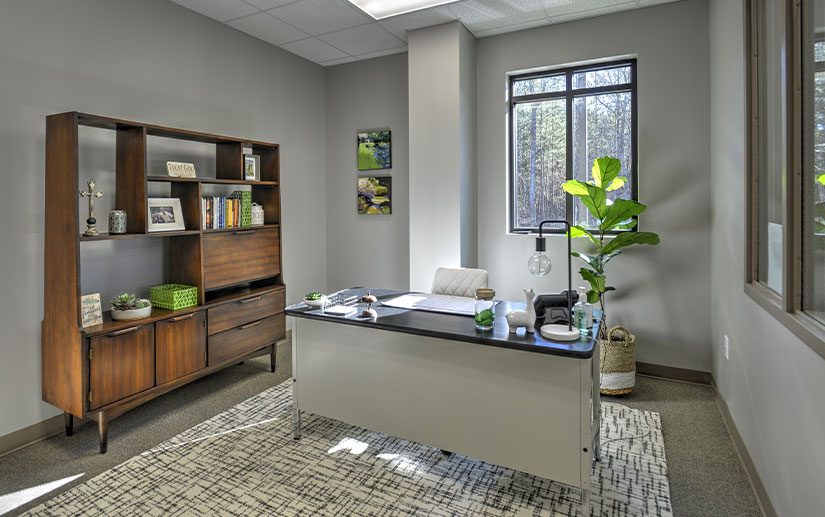Interior design is powerful – and just as important for a commercial space as it is for your residence. Quality design can evoke emotions to promote healing and wellness for workers and visitors. It can be playful or relaxing, and it can create the perfect work environment with focus and ergonomics.
In public buildings and commercial facilities, interior design touches our everyday life whether we realize it or not. Interior design acts as wayfinding to help users navigate through a building, and functional design helps employees achieve a higher level of output because everything they need is at their fingertips.
Evolution of interior design
The interior design industry has evolved over the years. Today, there is greater technical knowledge and skill that goes into excellent interior design. Designers focus on the general welfare of their clients through orchestrating well-thought-out spaces. Designers anticipate a client’s needs for a space through designing based on industry market trends and advanced design standards. A successful designer works alongside clients, architects, contractors, engineers, consultants, etc., depending on the project’s needs. Interior designers have knowledge in:
- Textiles
- Furniture
- Lighting
- Equipment and accessories
- Casework
- Color and the impact on human emotions
- Space planning
- Product sustainability
- Material selections and uses
- CAD and BIM software
- Rendering methods
- Safety and building codes
Responsibilities of an interior designer
No matter the size or complexity of the project, a designer must focus on creating a functional space that is aesthetically pleasing. The needs and wants of the client remain at the forefront of a designer’s mind throughout the project. An interior designer must be able to create an interesting and unique environment while keeping in mind the client’s branding, image and budget. The responsibilities of an interior designer include:
- Setting client project goals
- Visualizing spaces
- Conceptual design layouts
- Material and furniture selections
- Document selections
- Overseeing construction and installation of all materials
- Coordinating with engineers, contractors, consultants
- Survey of client satisfaction at project completion
Corporate interior design
When space planning, there are multiple aspects of the design that designers should consider. Employee health and wellness is a large concern when designing in a corporate or commercial environment. Natural lighting, placement of fixtures and ergonomics all contribute to functional corporate design.
Designers will know to ask the right questions to gather all information from the clients, and it is important for clients to provide designers with the tools they need when conceptually planning for the new space. Clients can give informed feedback from experience within a space, visual evidence of how a space currently functions and past project evaluations.
Universal design
Universal design of an environment is another significant component of commercial interiors. As defined by the National Disability Authority, “universal design is the design and composition of an environment so that it can be accessed, understood and used to the greatest extent possible by all people regardless of their age, size, ability or disability.” An interior environment should be designed to meet the needs of all people who intend to use it. Commercial interiors often need to function for a large population, so it is up to the interior designer to keep functionality in mind when planning for the space.
Working with an interior designer
Who better to design the interior of your new space than the company that built it and knows it best? Whatever you’re looking for, Bobbitt is ready not only to design your facility but to make it a reality – inside and out. Contact us to learn more about our interior design services.


